AI in healthcare – The question “Will AI Replace Healthcare Workers?” has been discussed at events such as SXSW, converging on the idea that it is not about replacement, but about redistribution and optimization of tasks. The focus shifts to how technology can eliminate operational bottlenecks, freeing up professionals’ time for activities of greater clinical value.

1. Main arguments of the base article
- Relief from repetitive tasks
- AI accelerates the processing of large volumes of data, reducing hours spent on administrative activities and manual information entry
- Empathy and judgment remain human
- Reception, decision-making in complex scenarios and patient-professional interaction remain exclusively human
New “tech worker” profile
Professionals begin to validate algorithm results, adjust system parameters and ensure data governance, requiring continuous training.
2. Challenge in pre-analytical laboratories
Before the analysis itself, the pre-analytical flow presents critical points that generate delays and errors:
- Identifizierung während der Entnahme: Tippfehler oder vertauschte Etiketten können zur Ablehnung der Probe oder zu Fehldiagnosen führen.
- Manual documentation: filling out forms and spreadsheets is time-consuming and subject to human error.
- Limited visibility: Coordinators rely on static reports to monitor collections, making reactions to issues slow.
These bottlenecks divert the team’s attention from the central objective: ensuring quality and patient safety.
3. eTrack functionalities in pre-analytical
O eTrack foi desenhado para atacar diretamente esses pontos de dor, com recursos que automatizam e padronizam o fluxo inicial de amostras:
- Traceability at the time of collection
- Reading of the 2D code (DataMatrix) printed on the label, automatically recording the item, batch and expiration date of each tube at the time of collection
- Material quality control
- Immediate blocking of tube records with expired validity period, alerting the user to avoid using non-compliant materials
- Recommended collection sequence
- Automatic organization of the collection order according to the Greiner protocol, reducing sample inversion errors
- Integration with LIS/HIS
- Export data via CSV or direct integration, synchronizing collection information with the laboratory management system without manual typing
- Basic inventory management
- Record available stock at each collection point, supporting replenishment decisions
- Offline and multiplatform mode
- App available for Android and iOS, with offline operation
- Indicators Dashboard
Real-time reporting on:
- Tubes used per day (by code)
- Average stock consumption
- Average handling time in pre-analytical
- Total collections made
These graphs allow the coordinator to instantly monitor pre-analytical performance and anticipate adjustments.
Conclusion
Just as the debate “Will AI Replace Healthcare Workers?” reinforces that technology should solve specific problems rather than replace professionals, eTrack exemplifies this approach by eliminating bureaucratic tasks and ensuring quality in pre-analytical laboratory work. With automation, quality control and real-time visibility, the system enhances human work, allowing teams to focus on the safety and accuracy of patient care.
We talk more about inteligência artificial in another post on the site.
For more information, contact us!
Leonardo Lippel
Account Executive | Greiner Bio-One Service Tech

